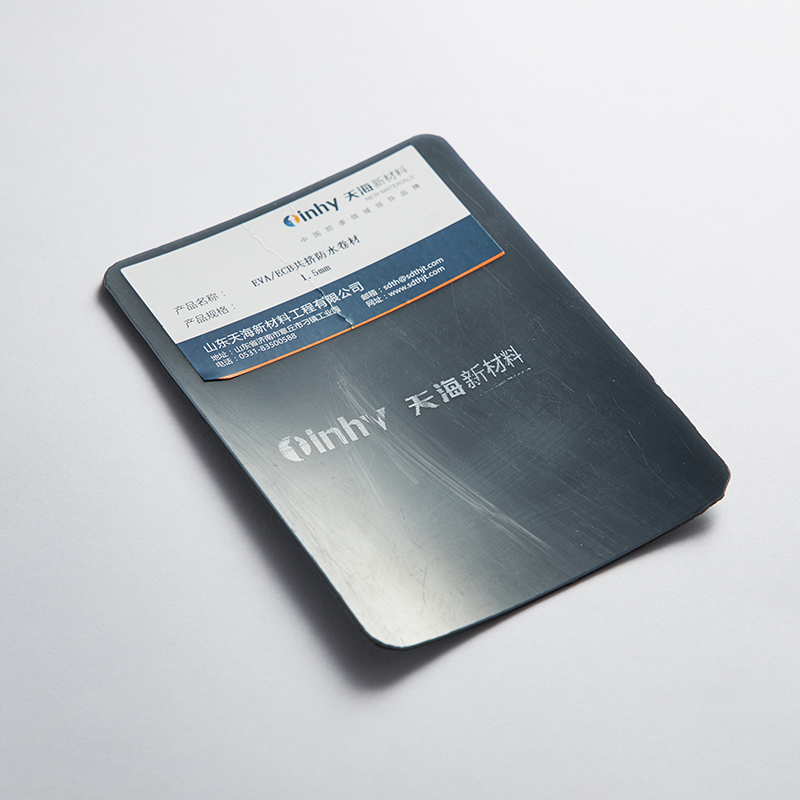The role of geomembrane application in reservoirs
Geomembrane has important applications in reservoir engineering. It can play a variety of roles and help maintain the safety, stability and sustainable operation of the reservoir. The following are the main functions of geomembrane in reservoirs:
Anti-seepage function: One of the main functions of the reservoir is to store and supply water resources. Geomembrane can be used as an anti-seepage layer to prevent leakage at the bottom and side walls of the reservoir. This helps maintain stable water levels in the reservoir and prevents wastage and leakage of water resources.
Prevent soil erosion: The soil around the reservoir is susceptible to water erosion and wave erosion. Geomembranes can be used to protect the soil around reservoirs, prevent erosion and sediment from entering the reservoir, and maintain the cleanliness and capacity of the reservoir.
Slope Protection: Slopes and levees surrounding reservoirs may require additional protection to prevent slope erosion and damage. Geomembranes can be used to protect slopes, reduce erosion by water flow and wind, and increase slope stability.
Foundation reinforcement: The foundations of reservoir bottoms and embankments need to have sufficient load-bearing capacity to withstand water pressure and soil loads. Geomembranes can be used to strengthen the foundation of reservoir structures and improve their stability and safety.
Water quality control: Geomembranes can be used to construct wastewater treatment and water quality control systems. It can be used as an anti-seepage layer in cesspools to prevent wastewater from leaking, thereby protecting the surrounding groundwater and soil.
Ecological restoration: After the reservoir construction is completed, the geomembrane can be used for ecological restoration and wetland protection. It can help create an environment suitable for vegetation growth and wildlife habitat, and promote ecological balance around the reservoir.

How to install geomembrane in reservoir?
The installation of geomembrane in reservoirs is a critical engineering activity that requires careful planning and professional technical operations. The following are general installation steps for geomembranes in reservoirs:
Preparation:
Clean the work area: Remove debris, gravel, dirt, vegetation, etc. in the reservoir work area to ensure that the construction area is clean and tidy.
Trim the slope and bottom: Make sure the surface of the reservoir dam body and bottom is flat and there are no protrusions or height differences.
Measurement and layout:
Take precise measurements: Use professional surveying instruments to take precise measurements of the reservoir’s contours, area and topography.
Develop a layout plan: Develop a layout plan for geomembrane laying based on the measurement results, and determine the size and shape of the geomembrane.
Laying geomembrane:
Laying the bottom geomembrane: Lay the geomembrane on the surface of the reservoir dam body and dam bottom to ensure that the construction area is completely covered.
Accurate seams: According to the manufacturer’s recommendations, use appropriate methods and materials to process the geomembrane seams to ensure they are sealed and secure.
Fixing the geomembrane: Use heavy objects or ground nails to fix the geomembrane on the surface of the reservoir dam body and dam bottom to prevent it from being pulled up by wind or water flow.
Check and fix:
Check the quality of the geomembrane: Carefully check the quality of the geomembrane installation to ensure there are no obvious damages, defects or leaks.
Repair problems promptly: If the geomembrane is found to be damaged or suspected of leaking, repairs should be made promptly to avoid further problems.
Follow-up:
Slope protection: As needed, add a slope protection layer, such as gravel, turf, vegetation or other appropriate materials, to the geomembrane to protect the geomembrane from UV rays and mechanical wear.
Monitoring and maintenance: Regularly monitor and maintain the installed geomembrane to ensure its performance and integrity, and to detect and solve potential problems in a timely manner.
Please note that the above steps are only general guidance and the specific geomembrane installation process should be determined based on the specific characteristics, design requirements and technical specifications of the reservoir. It is best to install geomembranes by experienced professionals to ensure installation quality and project reliability.

Should HDPE or PVC be used to install geomembrane in reservoirs?
When it comes to installing geomembranes on reservoirs, HDPE (high-density polyethylene) and PVC (polyvinyl chloride) are common material choices. Here is a comparison of some features and applicability of these two materials:
HDPE (high density polyethylene) geomembrane:
Resistance to chemical corrosion: HDPE has excellent chemical stability and can effectively resist the corrosion of most chemical substances. It is suitable for reservoir environments containing chemical solutions.
Anti-permeability: HDPE has excellent anti-permeability properties, which can effectively prevent the penetration of water and pollutants, and plays a good anti-seepage function in reservoirs.
Durability: HDPE has high anti-aging and durability properties, and can maintain stable performance and lifespan under long-term exposure to UV rays and environmental influences.
PVC (polyvinyl chloride) geomembrane:
Flexibility: PVC geomembrane has good flexibility and plasticity, strong adaptability, and is more flexible in dealing with more complex reservoir terrain and shapes.
Good welding performance: PVC geomembrane has good welding performance, is easy to repair and connect, and is more convenient for splicing joints in reservoirs.
UV resistance: PVC geomembranes usually contain UV antioxidants, which can provide better UV resistance and are suitable for reservoir applications that are exposed to the sun for a long time.
All things considered, the choice of HDPE or PVC geomembrane should be evaluated based on specific reservoir project requirements, environmental conditions, economics and other factors.
Under normal circumstances, HDPE geomembrane performs better in terms of resistance to chemical corrosion and anti-permeability, and is suitable for reservoirs with high chemical substances; while PVC geomembrane is more outstanding in flexibility and welding performance, and is suitable for reservoirs with complex shapes. design.
The best choice should be weighed based on the specific situation and engineering requirements. It is also important to consult a professional engineer or expert to make an informed choice based on specific requirements.

